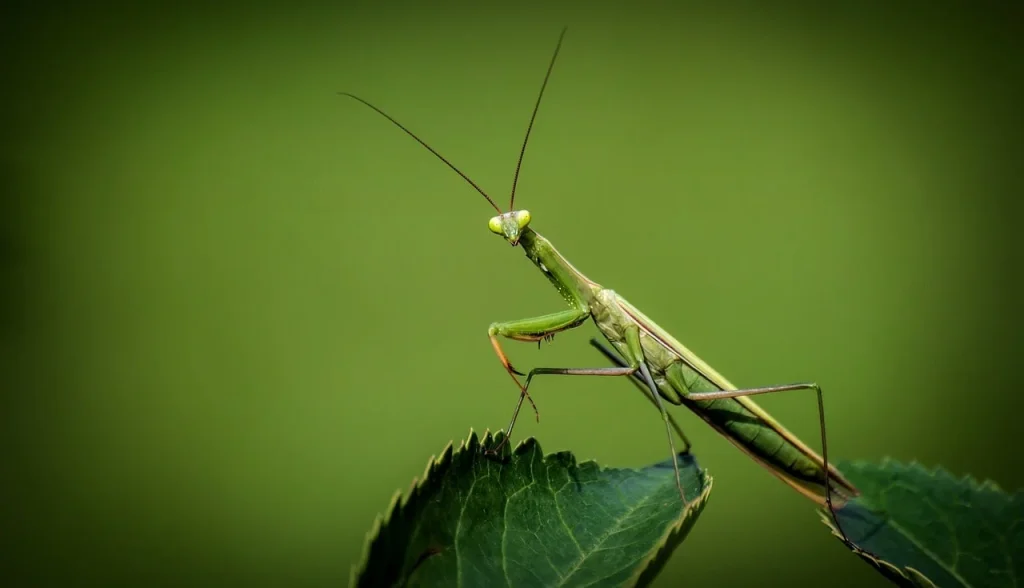
Praying Mantis Myths
Moving on from the facts, it’s time to tackle some myths and reveal the reality behind them.
- Praying mantises are always green.
They are not limited to just green; their colors vary widely. They can be found in shades of brown, gray, and even pink, especially in environments where such colors offer better camouflage. - Female praying mantises always eat their mates.
It is not always the case that female praying mantises consume their mates. This behavior is observed primarily in captivity, where males cannot escape easily, rather than as a common practice in the wild. - Praying mantises are harmful to humans.
They are not harmful to humans. They are non-venomous and their defensive bite, which is rare, is not dangerous to humans. - Praying mantises can only turn their heads 180 degrees.
An impressive flexibility is exhibited by praying mantises; they can swivel their heads nearly 180 degrees to scan their surroundings, allowing them to see almost all the way behind them. - Praying mantises are not helpful in gardens.
Contrary to this belief, they are considered beneficial in gardens. They are voracious predators of pests such as mosquitoes, moths, and flies, helping to keep these populations under control.



9 Comments
very interesting, few things did not know
don’t send me anymore emails how did you get it anyway stop the junk that takes up mt time PLEASE!!!!
I am a science major graduating with honors our of a fine college in Colorado, then California. I truly enjoy these insect articles, particularly the one on the Prey Mantis. A great read! You know I have bookmarked this site for more enjoyable reading. Thank you so much.
I am a science major graduating with honors out of a fine college in Colorado, then California. I truly enjoy these insect articles, particularly the one on the Prey Mantis. A great read! You know I have bookmarked this site for more enjoyable reading. Thank you so much.
It’s not consummating, but consuming. Consummating a marriage is by sexual intercourse. Funny mistake.
Am a nature lover such amazing facts make me glorify our God The Almighty creator of the heavens and the earth
I’ve always been fascinated with the insects. Once I noticed one on my windshield after I’d stopped for fuel.. it was a bright,, lime green color and quite lovely.. i grabbed my cell phone and snapped a few pictures. After I returned home I used a filter to spice up my photos,, put hair on some,, hats on others, etc. I sent them to my granddaughters to enjoy and they did just that! Thanks for sharing the information. P.S. I hope I never see a mantis eating a hummingbird!! They’re my favorites ♡
You said consummating instead of consuming.
Can you post the correct answers? I scored 9/10 both times I took the quiz.